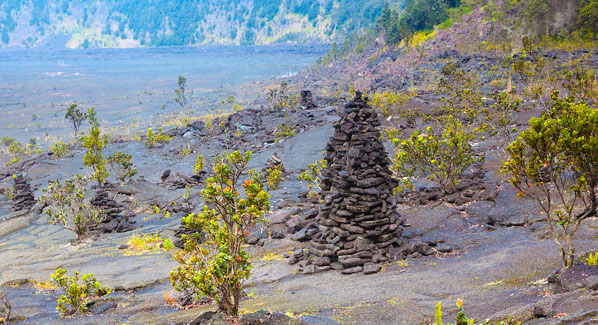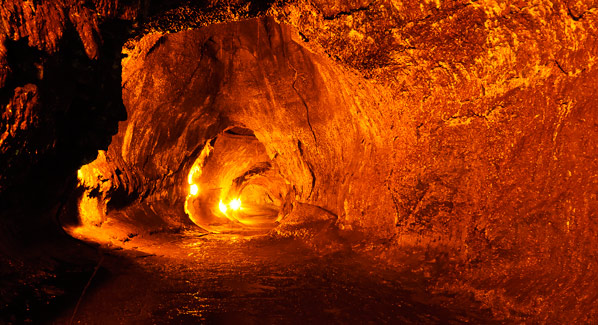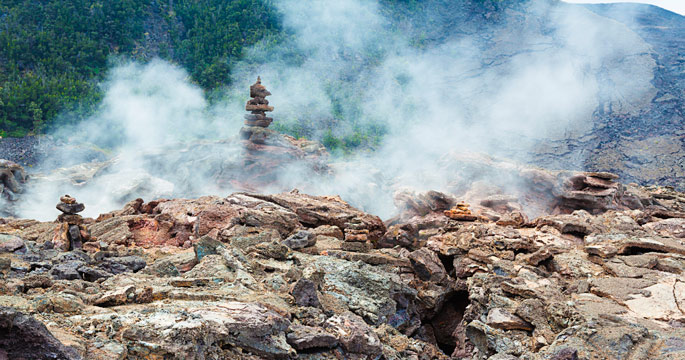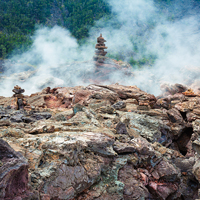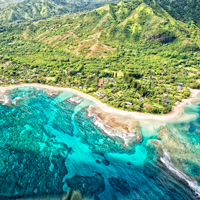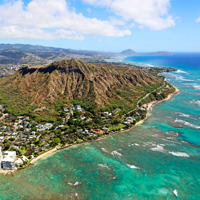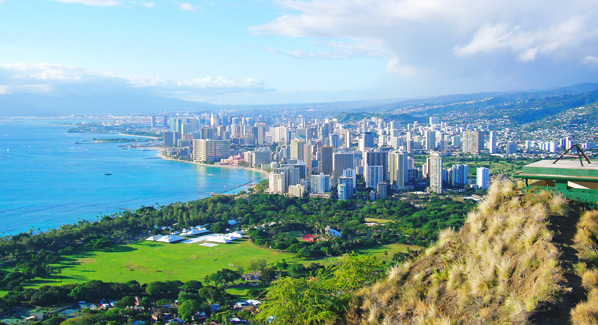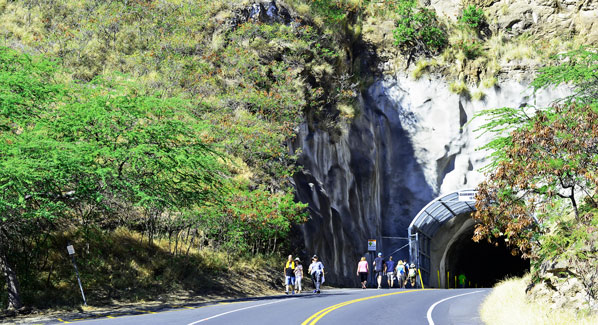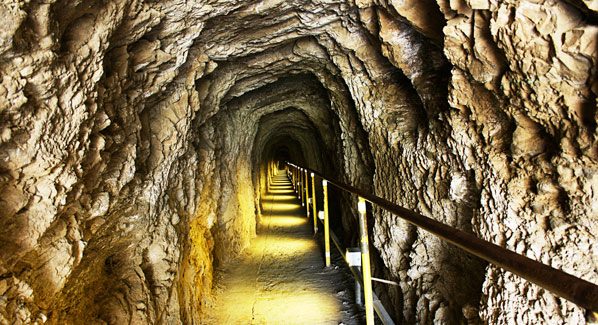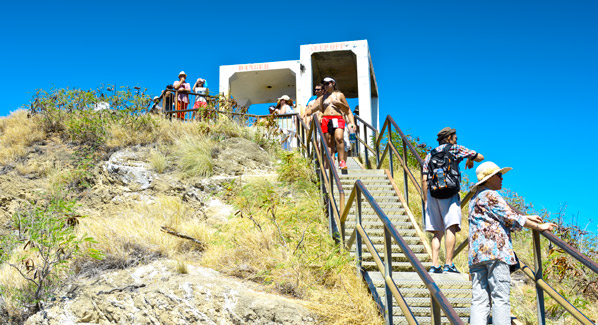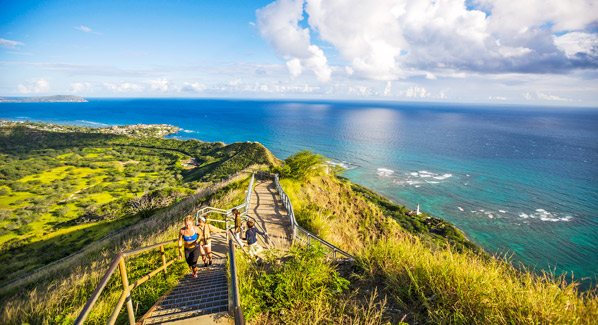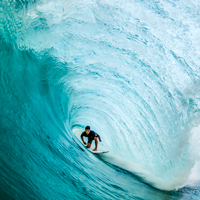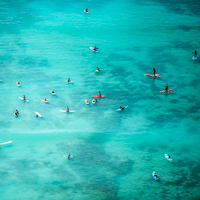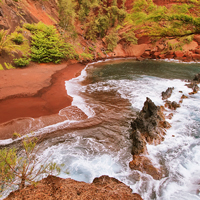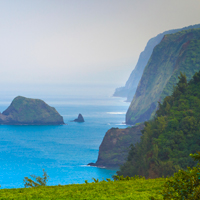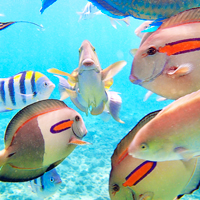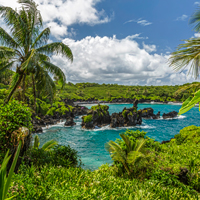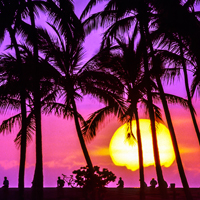Few other places in the world can match the scenic beauty and diversity of the Hawaiian Islands. From towering sea cliffs and thundering surf to waterfalls, rainforests and active volcanoes, it’s all here. And one of the best ways to experience this enticing visual smorgasbord is by air. Helicopter tours of the islands rank high on most visitors’ bucket lists, and can be booked at each of the four major islands. Here’s what to expect.
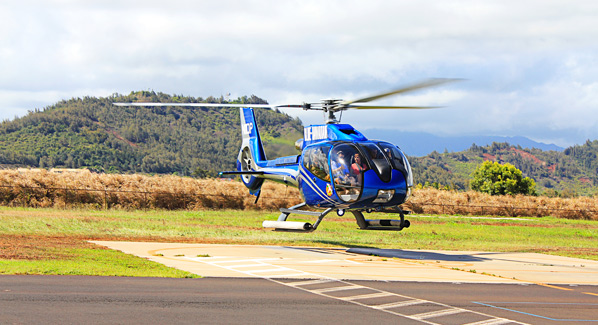
Tour companies such as Blue Hawaii carry passengers in fast, turbine- powered helicopters that can reach all corners of the islands in comfort and safety. Photo: Marek Sluzarczyk/iStock
Oahu
An aerial view of Oahu takes in famous landmarks and also reveals a very different side of the island. Tours may begin with an overflight of Pearl Harbor for a bird’s eye view of the Arizona Memorial, the battleship Missouri and the historic Aloha Tower. Next comes bustling downtown Honolulu and overflights of the iconic beaches of Waikiki, Diamond Head and the glittering shallows of Hanauma Bay. Then, as the pilot heads farther east, a very different side of Oahu is revealed. The island’s interior is a realm of towering mountains, lush rainforests and hidden valleys. A soaring flight over the Pali cliffs leads to a windward coastline lined with spectacular beaches and colorful coral reefs, all set against sea cliffs where waterfalls spill from the heights. In winter months, passengers have a grandstand seat for the North Shore’s surf scene, where the best wave riders in the world gather to challenge monster swells.
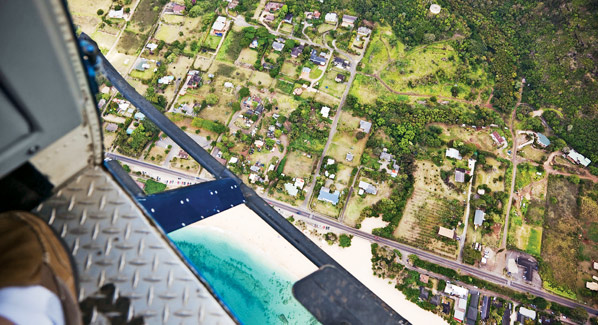
A birds-eye view of Oahu’s eastern shore, where the Kamehameha Highway runs beachside. Nearby Ahupuaa O Kahana State Park offers camping and hiking trails. Photo: Slobo Mitic/ iStock
Kauai
More than half of the Garden Isle can’t be reached by road, and there’s a lot to see on this greenest of the Hawaiian Islands. Kauai’s deep canyons, towering sea cliffs and majestic waterfalls deliver cinematic grandeur, and have been a favorite of filmmakers from South Pacific to King Kong and Jurassic Park. A typical tour route will swoop through the expansive Hanapepe Valley en route to the cascading waters of Manawaiapuna, aka Jurassic Falls. Anywhere else, the razor-thin ridges and deep clefts of Olokele Canyon would be the main attraction, but on Kauai, this remote valley is just a warm up for the even grander vistas of Waimea Canyon, the so-called “Grand Canyon of the Pacific.” Next up are the sculpted sea cliffs of the NaPali Coast, and the pristine blue waters of Hanalei Bay. For a spectacular finish, pilots head for Mount Waialeale, the wettest spot on Earth, where 3,000-foot waterfalls spill down the towering mile-high walls of an ancient crater.
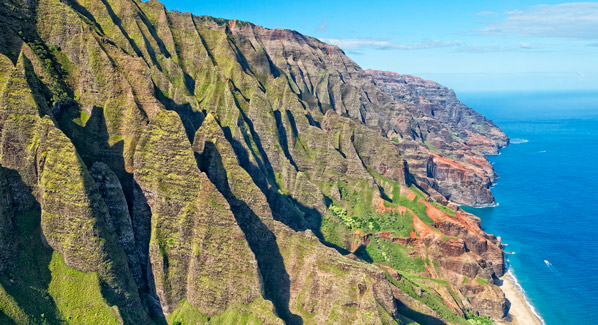
There are no roads on the rugged sea cliffs of Kauai’s Napali Coast. Hikers follow demanding cliffside trails to hidden valleys, but helicopter flights provide much easier access. Photo: Andrea Izzotti/iStock
Maui
An aerial tour of Maui begins with a decision: east, west or both. A flight over the West Maui Mountains takes in views of one of the wettest places on earth, with plenty of waterfalls and greenery. Also on the route are the isolated beaches of the north shore, expansive sugarcane and pineapple fields, the historic town of Lahaina and the scenic shores and resorts of Kaanapali and Kapalua. Some tours take to the sea to reach the world’s highest sea cliffs on neighboring Molokai Island. In winter and spring, there is a chance of seeing breaching humpback whales during the crossing. A circumnavigation of east Maui begins with a climb to the lunar-like landscape Haleakala Crater, Hawaii’s largest dormant volcano. Descending eastward, flights then follow a lush coastline where waterfalls sparkle amidst rainforest greens. After passing the village of Hana, the scenery changes once more to the open plains of the island’s seldom-visited southern shore. For the ultimate Maui tour, some operators offer an all- island route that showcases the full spectrum of the Valley Isle’s scenic treasures.
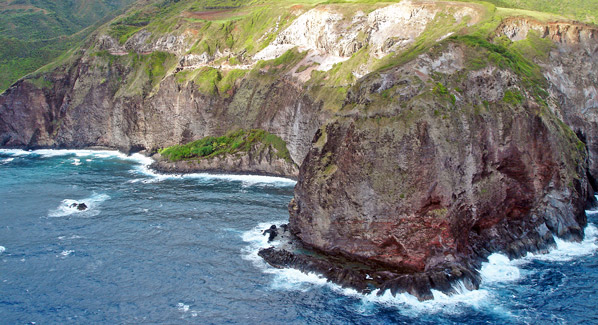
Maui’s surf-washed northwestern coast is flanked by tall sea cliffs. The only land access to this sparsely populated region is via a narrow, one-lane road that often hugs the cliffs. Photo: iStock
Hawaii
The Big Island is a land of contrasts and extremes. In winter, the soaring peaks of Mauna Kea and Mauna Loa are often covered in snow. A few miles to the south, the smoke and fire of Kilauea are proof that this is a young volcanic island, still rising from the sea. Overflights of this active volcano are a staple of helicopter tours originating on the east coast town of Hilo, providing passengers with a rare opportunity to witness active lava flows and massive steam clouds created when the molten rock meets the sea. These same routes also take in black sand beaches and the island’s oldest landscapes: the deep valleys and rain forests of the Kohala mountains. Longer flights originating on the island’s western shore provide a dramatic look at up to eight distinct climate-zones, included the arid coastal plains of Kohala, the ranches of the Waimea highlands and the verdant coastal landscapes of the Waipio valley and the Hamakua Coast.
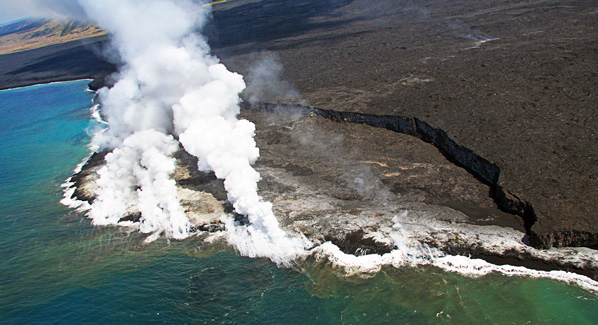
On the south coast of the big island of Hawaii, helicopter flights provide a rare chance to witness the steam clouds created when lava flowing from Kilauea Volcano meet the sea. Photo: iStock
